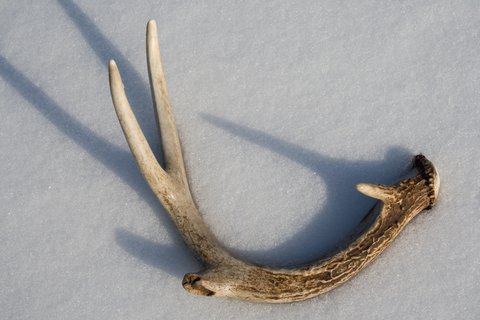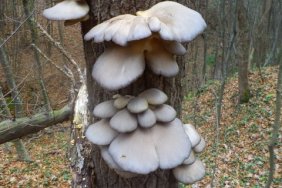With deer season in the rear view mirror, many deer hunters are looking for ways to pass the long winter months. One way to spend the off-season is to search for sheds antlers.
Hunting for shed antlers is not only fun and rewarding, but it also helps sharpen your skills for next season. What’s more, shed hunting provides some insight into the size and age of the deer population in areas you hunt.
Following a few basic tips will help you improve your success when shed hunting.
Plan Your Trip
As you would with the deer hunt, plan your shed hunting trips before you go out. The easiest way to do this is to concentrate on areas you regularly hunt. Use a map and plot the areas that you have found deer activity in the past and use that as a starting point.
Shed hunting also opens the opportunity to visit areas you would not go to during the hunting season. This is especially true for people who live in suburban or urban areas, which have plenty of deer, but do not allow hunting. Public lands in these areas can be great places to shed hunt.
Another option to consider is visiting private property that you have wanted to hunt. A landowner might be more likely to allow you to shed hunt on their property, than deer hunt. If you build some good will and repay their hospitality by giving them some antlers you find on their property, it may open the door to deer hunting in the future.
Best Areas
It may seem basic, but you should concentrate your shed hunting on areas with the highest deer activity. This includes travel routes, transition areas between woods and fields, food sources and bedding areas.
By concentrating on the areas with the highest activity, you greatly improve your odds of finding antlers. You may also learn more about deer activity in areas you regularly hunt, which can be put to use next season.
Hunting Basics
Anyone who has been shed hunting can tell you it is not always easy to find antlers, even when they are right next to you. Antlers commonly blend in with dried grass and branches and can be tough to see. The best strategy is to walk slowly and keep your eyes pointed down, scanning in each direction.
Another good strategy is to periodically stop and turn around, to scan the ground behind you. Often, sheds may be obscured from view when moving in one direction, but may be visible from the opposite direction.
It is extremely helpful to use a grid-search pattern when shed hunting. This helps ensure you do not miss any areas in your search.
Recording Data
If you are shed hunting in an area you are likely to deer hunt in the future, it is beneficial to record the areas you find antlers. Useing a GPS to mark the coordinates of your finds will prove helpful on future deer hunts.
Along with the GPS coordinates, record the size of the antlers you find. This will give you a record of the size and age of the deer in the area.
Shed hunting may not offer the excitement of a deer hunt, but it can be a fun way to pass the winter months, sharpen your hunting skills and provide some research data for next season.
Photo credit: Dreamstime








